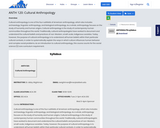
The syllabus for ANTH 120: Cultural Anthropology, taught at Mary Baldwin University by Dr. Abigail Wightman, PhD.
- Subject:
- Anthropology
- Material Type:
- Syllabus
- Author:
- Abigail Wightman
- Date Added:
- 03/17/2020

The syllabus for ANTH 120: Cultural Anthropology, taught at Mary Baldwin University by Dr. Abigail Wightman, PhD.
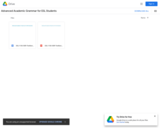
This textbook was created for an advanced academic grammar course for ESL students. By the end of the course, students will recognize and demonstrate the appropriate use of advanced grammar structures. To meet these outcomes, students will listen to aural language that includes the target structures, identify and edit grammar errors in written language, read and analyze texts that include the target grammar structures, and demonstrate the correct and appropriate use of target structures in written and spoken language.
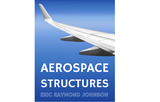
Aerospace Structures by Eric Raymond Johnson is a 600+ page text and reference book for junior, senior, and graduate-level aerospace engineering students. The text begins with a discussion of the aerodynamic and inertia loads acting on aircraft in symmetric flight and presents a linear theory for the status and dynamic response of thin-walled straight bars with closed and open cross-sections. Isotropic and fiber-reinforced polymer (FRP) composite materials including temperature effects are modeled with Hooke’s law. Methods of analyses are by differential equations, Castigliano’s theorems, the direct stiffness method, the finite element method, and Lagrange’s equations. There are numerous examples for the response axial bars, beams, coplanar trusses, coplanar frames, and coplanar curved bars. Failure initiation by the von Mises yield criterion, buckling, wing divergence, fracture, and by Puck’s criterion for FRP composites are presented in the examples.
Resources
PDFs (book and chapter-level)
Problem sets: http://hdl.handle.net/10919/104169
LaTeX sourcefiles: Expected spring 2022
Print (Softcover. Does not include appendix): https://www.amazon.com/dp/1949373444.
Professors, if you are reviewing this book for adoption in your course, please let us know here: http://bit.ly/interest-aerospace-structures. Instructors reviewing, adopting, or adapting parts or the whole of the text are especially encouraged to sign up.
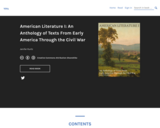
Long Description:
This book offers an anthology of texts that includes letters, journals, poetry, newspaper articles, pamphlets, sermons, narratives, and short fiction written in and about America beginning with collected oral stories from Native American tribes and ending with the poetry of Emily Dickinson. Many major and minor authors are included, providing a sampling of the different styles, topics, cultures, and concerns present during the formation and development of America through the mid-nineteenth century.
Word Count: 481042
(Note: This resource's metadata has been created automatically by reformatting and/or combining the information that the author initially provided as part of a bulk import process.)
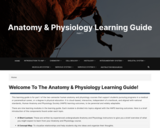
This learning guide is for part I of the two-semester human anatomy and physiology courses that support students pursuing programs in a medical or paramedical career, or a degree in physical education. It is cloud-based, interactive, independent of a textbook, and aligned with national standards, Human Anatomy and Physiology Society (HAPS) learning outcomes, to be perennial and widely adaptable.
There are nine learning modules in the learning guide. Each module is divided into topics aligned with the HAPS learning outcomes. Here is a brief introduction of the components found under each topic.
A Short Lecture: These are written by experienced undergraduate Anatomy and Physiology instructors to give you a brief overview of what you might expect to learn from your Anatomy and Physiology course.
A Concept Map: To visualize relationships and help students dig into ideas and organize their thoughts.
Key Points: A very quick overview of important concepts for the section.
Muddiest Points: Points that have caused confusion for students.
Interactive Exercises: These exercises can help students check their learning.
Students can use the learning guide as the following:
An overview before starting a topic in an Anatomy and Physiology Course
A guide to correct anatomical terminology that underlies the concepts of the course work
A place to review confusing concepts in regular course work
A place to find extra resources for study of concepts that are either understood or are still murky.
The development of this human anatomy and physiology learning guide is made possible with the support of the Virtual Library of Virginia (VIVA) Open Course Grants. It is created by a group of experienced faculty members at Northern Virginia Community College and reviewed by several members of the Human Anatomy and Physiology faculty at George Mason University.
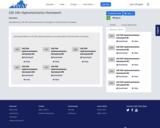
Homework for CEE 330: Hydromechanics as taught at Old Dominion University.
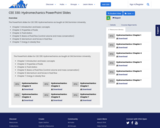
The PowerPoint slides for CEE 330: Hydromechanics as taught at Old Dominion University.Chapter 1: Introduction and basic conceptsChapter 2: Properties of fluids Chapter 4: Fluid staticsChapter 5: Basics of fluid flow (control volume and mass conservation)Chapter 6: Momentum and forces in fluid flowChapter 7: Energy in steady flow

Cardiovascular Pathophysiology for Pre-Clinical Students is an undergraduate medical-level resource for foundational knowledge of common cardiovascular diseases, disorders and pathologies. This text is designed for a course pre-clinical undergraduate medical curriculum and it is aligned to USMLE(r) (United States Medical Licensing Examination) content guidelines. The text is meant to provide the essential information from these content areas in a concise format that would allow learner preparation to engage in an active classroom. Clinical correlates and additional application of content is intended to be provided in the classroom experience. The text assumes that the students will have an understanding of basic cardiovascular physiology that will be helpful to understand the content presented here. This resource should be assistive to the learner later in medical school and for exam preparation given the material is presented in a succinct manner, with a focus on high-yield concepts.
The 70-page text was created specifically for use by pre-clinical students at Virginia Tech Carilion School of Medicine and was based on faculty experience and peer review to guide development and hone important topics.
Available Formats
ISBN 978-1-957213-02-6 (PDF)
ISBN 978-1-957213-03-3 (ePub)
ISBN 978-1-957213-04-0 (print) https://www.amazon.com/Cardiovascular-Pathophysiology-Pre-Clinical-Students-Andrew/dp/1957213043
ISBN 978-1-957213-01-9 (Pressbooks)
https://pressbooks.lib.vt.edu/cardiovascularpathophysiology
Also available via LibreTexts: https://med.libretexts.org/@go/page/34347
How to Adopt this Book
Instructors reviewing, adopting, or adapting parts or the whole of the text are requested to register their interest at: https://bit.ly/interest-preclinical.
Instructors and subject matter experts interested in and sharing their original course materials relevant to pre-clinical education are requested to join the instructor portal at https://www.oercommons.org/groups/pre-clinical-resources/10133.
Features of this Book
1. Detailed learning objectives are provided at the beginning of each chapter;
2. High resolution, color contrasting figures illustrate concepts, relationships, and processes throughout;
3. Subsection summary tables
4. End of chapter lists provide additional sources of information; and
5. Accessibility features including structured heads and alternative-text provide access for readers accessing the work via a screen-reader.
Table of Contents
1. Arrhythmias
2. Heart Failure
3. Hypertension
4. Valvular Disease
5. Heart Sounds and Murmurs
6. Congenital Heart Disease
7. Ischemic Heart Disease
Suggested Citation
Binks, Andrew., (2022). Cardiovascular Pathophysiology for Pre-Clinical Students, Roanoke: Virginia Tech Carilion School of Medicine. https://doi.org/10.21061/cardiovascularpathophysiology. Licensed with CC BY NC-SA 4.0.
About the Author
Dr. Andrew Binks is a cardiopulmonary physiologist who gained his BSc (Hons) in Physiological Sciences at the University of Newcastle upon Tyne, then a MSc in Human and Applied Physiology from King’s College, London. He returned to Newcastle to do his PhD and study the underlying physiological mechanisms of dyspnea, the cardinal symptom of cardiopulmonary disease. He continued investigating dyspnea at Harvard School of Public Health as a postdoctoral fellow and then as a research scientist. After seven years at Harvard, Andrew took his first faculty position at the University of New England where he taught cardiovascular and pulmonary physiology to health profession and medical students. He continued to teach medical students their heart and lung physiology after moving to the University of South Carolina’s Medical School in Greenville where he also directed the school’s heart and lung pathophysiology courses. Andrew currently teaches heart and lung physiology and pathophysiology at Virginia Tech Carilion School of Medicine, directs the heart and lung pathophysiology course and has also served as the departmental director of faculty development.
In his two decades of teaching medical physiology, Andrew has regularly drawn upon his dyspnea research experience to generate an active, clinically focused approach to medical education. This book is part of that approach and supports students preparing for class with the basic information with the intention to apply and contextualize that information in a guided case-based classroom experience.
Andrew has published numerous peer-reviewed research papers and book chapters about dyspnea and about contemporary medical education. He has also given keynote presentations, faculty workshops and international webinars to promote effective medical education for the modern adult learner.
Accessibility Note
The University Libraries at Virginia Tech and Virginia Tech Publishing are committed to making its publications accessible in accordance with the Americans with Disabilities Act of 1990. The HTML (Pressbooks) and ePub versions of this book utilize header structures and include alternative text which allow for machine-readability.
Please report any errors at https://bit.ly/feedback-preclinical
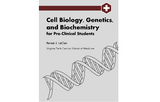
Cell Biology, Genetics, and Biochemistry for Pre-Clinical Students (2021) is an undergraduate medical-level resource for foundational knowledge across the disciplines of genetics, cell biology and biochemistry. This USMLE-aligned text is designed for a first-year undergraduate medical course that is delivered typically before students start to explore systems physiology and pathophysiology. The text is meant to provide the essential information from these content areas in a concise format that would allow learner preparation to engage in an active classroom. Clinical correlates and additional application of content is intended to be provided in the classroom experience. The text assumes that the students will have completed medical school prerequisites (including the MCAT) in which they will have been introduced to the most fundamental concepts of biology and chemistry that are essential to understand the content presented here. This resource should be assistive to the learner later in medical school and for exam preparation given the material is presented in a succinct manner, with a focus on high-yield concepts.
The 276-page text was created specifically for use by pre-clinical students at Virginia Tech Carilion School of Medicine and was based on faculty experience and peer review to guide development and hone important topics.
Available Formats
978-1-949373-42-4 (PDF)
978-1-949373-43-1 (ePub) https://doi.org/10.21061/cellbio
978-1-949373-41-7 (Pressbooks) https://pressbooks.lib.vt.edu/cellbio
Also available via LibreTexts: https://med.libretexts.org/@go/page/37584
Print now available https://www.amazon.com/dp/194937341X
How to Adopt this Book
Instructors reviewing, adopting, or adapting parts or the whole of the text are requested to register their interest at: https://bit.ly/interest-preclinical.
Instructors and subject matter experts interested in and sharing their original course materials relevant to pre-clinical education are requested to join the instructor portal at https://www.oercommons.org/groups/pre-clinical-resources/10133.
Features of this Book
1. Detailed learning objectives are provided at the beginning of each subsection
2. High resolution, color contrasting figures illustrate concepts, relationships, and processes throughout
3. Summary tables display detailed information
4. End of chapter lists provide additional sources of information
5. Accessibility features including structured heads and alternative-text provide access for readers accessing the work via a screen-reader
Table of Contents
1. Biochemistry basics
2. Basic laboratory measurements
3. Fed and fasted state
4. Fuel for now
5. Fuel for later
6. Lipoprotein metabolism and cholesterol synthesis
7. Pentose phosphate pathway (PPP), purine and pyrimidine metabolism
8. Amino acid metabolism and heritable disorders of degradation
9. Disorders of monosaccharide metabolism and other metabolic conditions
10. Genes, genomes, and DNA
11. Transcription and translation
12. Gene regulation and the cell cycle
13. Human genetics
14. Linkage studies, pedigrees, and population genetics
15. Cellular signaling
16. Plasma membrane
17. Cytoplasmic membranes
18. Cytoskeleton
19. Extracellular matrix
Suggested Citation
LeClair, Renée J., (2021). Cell Biology, Genetics, and Biochemistry for Pre-Clinical Students, Blacksburg, VA: Virginia Tech Publishing. https://doi.org/10.21061/cellbio. Licensed with CC BY NC-SA 4.0.
About the Author
Renée J. LeClair is an Associate Professor in the Department of Basic Science Education at the Virginia Tech Carilion School of Medicine, where her role is to engage activities that support the departmental mission of developing an integrated medical experience using evidence-based delivery grounded in the science of learning. She received a Ph.D. at Rice University and completed a postdoctoral fellowship at the Maine Medical Center Research Institute in vascular biology. She became involved in medical education, curricular renovation, and implementation of innovative teaching methods during her first faculty appointment, at the University of New England, College of Osteopathic Medicine. In 2013, she moved to a new medical school, University of South Carolina, School of Medicine, Greenville. The opportunities afforded by joining a new program and serving as the Chair of the Curriculum committee provided a blank slate for creative curricular development and close involvement with the accreditation process. During her tenure she developed and directed a team-taught student-centered undergraduate medical course that integrated the scientific and clinical sciences to assess all six-core competencies of medical education.
Accessibility Note
The University Libraries at Virginia Tech and Virginia Tech Publishing are committed to making its publications accessible in accordance with the Americans with Disabilities Act of 1990. The HTML (Pressbooks) and ePub versions of this book utilize header structures and include alternative text which allow for machine-readability.
Please report any errors at https://bit.ly/feedback-preclinical
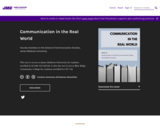
The content of this book is designed to help you be a more competent communicator. The four major objectives are:
Explain the fundamental processes that significantly influence communication.
Construct messages consistent with the diversity of communication purpose, audience, context, and ethics.
Respond to messages consistent with the diversity of communication purpose, audience, context, and ethics.
Utilize information literacy skills expected of ethical communicators.
Each section of this text is designed to help you recognize what you should be gaining from the text in support of our goal to help you be an effective communicator. The first thing you will see is an introduction of what will be covered in each subsequent chapter, followed by content that will offer you the opportunity to click on bolded terms for definitions, and finally, links to external resource materials (e.g., videos or other content).
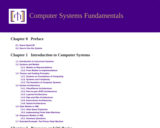
The aim of this book is to provide a breadth-first overview of concurrent systems architectures and programming. Specifically, this book aims to cover 100% of the Core Tier 1 material for the areas of System Fundamentals, Operating Systems, Network-centric Computing, and Parallel and Distributed Computing. In achieving this coverage, this book provides a flexible foundation for undergraduate Computer Science programs to achieve Core Tier 1 coverage while customizing their curriculum for Core Tier 2 as appropriate for their students. Furthermore, this approach provides a foundational scaffold for additional systems courses that can apply these principles and concepts with more in-depth study of specific areas.
Table of Contents
Chapter 0: Preface
Chapter 1: Introduction to Computer Systems
Chapter 2: Processes and OS Basics
Chapter 3: Concurrency with IPC
Chapter 4: Networked Concurrency
Chapter 5: The Internet and Connectivity
Chapter 6: Concurrency with Multithreading
Chapter 7: Synchronization Primitives
Chapter 8: Synchronization Patterns and Problems
Chapter 9: Parallel and Distributed Systems
Appendix A
Appendix B

Short Description:
Conversaciones Corrientes: Temas de Cultura y Sociedad will be undergoing updates through August 15th (2023). If you plan to use this resource for a summer 2023 course, please download the current version to your desktop. For the 2023-2024 academic year, updated articles will be available in August. Please contact Dr. Laurie A. Massery (lauriemassery@rmc.edu) with any questions or concerns. This book is designed to facilitate conversation in Spanish among intermediate and post-intermediate learners of Spanish. The following online textbook allows students to read about, review and discuss interesting, entertaining and relevant topics that will undoubtedly elicit conversation and friendly debate among classmates. Topics including spirituality, family design, life choices, social norms and even history and its impact on Generation Z, are discussed.
Word Count: 36073
(Note: This resource's metadata has been created automatically by reformatting and/or combining the information that the author initially provided as part of a bulk import process.)
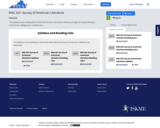
The syllabus and reading lists for ENG 241: Survey of American Literature, taught at Virginia Western Community College by Dr. Jenifer Kurtz.
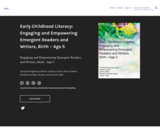
Engaging and Empowering Emergent Readers and Writers, Birth - Age 5
Word Count: 76984
(Note: This resource's metadata has been created automatically as part of a bulk import process by reformatting and/or combining the information that the author initially provided. As a result, there may be errors in formatting.)
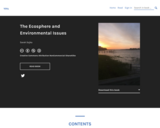
This textbook is designed for introductory environmental studies and science students. The goal is to teach essential ecological concepts by linking them to key environmental issues. The hope is that students can easily understand how firm grounding in these concepts can help them appreciate and hopefully address the biggest environmental threats of our time. After an initial section on the nature of science and an overview of ecology, the textbook is divided into four sections, each addressing a key environmental concern: global climate change, eutrophication, biodiversity loss and food supply and security. After a brief introduction to the environmental concern, the book addresses ecological concepts relevant for understanding the issue. Each section wraps up with a return to the environmental concern and insight into how the ecological concepts learned can be applied to the environmental issue.
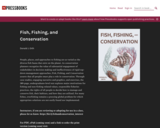
Fish, Fishing, and Conservation is a 389-page, peer-reviewed open textbook intended for undergraduate students who are exploring majors in Fish & Wildlife. It is also relevant to a general audience or for use in courses which explore social and ethical aspects of fish, fishing and conservation.
People, places, and approaches to fishing are as varied as the diverse fish fauna that exist on the planet. As conservation planners recognize the value of substantial engagement of stakeholders in decision making and ineffectiveness of rigid top-down management approaches, Fish, Fishing, and Conservation asserts that all peoples must play a role in conservation. Through case studies, engaging narrative and graphics, and exercises, the text explores major motivations for fishing and non-fishing related values, responsible fisheries practices, the rights of all people to decide how to manage and conserve fish, their habitats, and how they are utilized in the context of overfishing as a pressing global problem for which appropriate solutions are not easily found nor implemented. Introductory chapters examine fish, fishing, and why fish matter and examine the role of values in driving conservation initiatives. Fish and their unique sensory capabilities are described along with a review of recent studies to examine issues of pain, sentience, and learning in fishes living in a foreign, underwater world. The text incorporates these new findings in conservation and management leading readers to evaluate and adopt suitable approaches to ethical reasoning which consider the welfare needs of wild and cultured fishes. Later chapters focus on the role of gender in fishing, conservation organizations, recreational fishing, and a focus on specific fisheries that reveal the principles of conservation and management as they play out in major controversies. Additionally, the textbook contains audio recordings of professional profiles by Virginia Tech students. These are linked at the beginning of each end-of-chapter Professional Profile. Audio recordings are also available on Spotify: https://open.spotify.com/show/06SnqAigflPXUgGNIHZxAX?si=Sljj3q9NRyOcclbmEE3npA
Please let us know if you are reviewing or adopting this book https://bit.ly/fishandconservation_interest
Table of Contents
1. Fish, Fishing, and Why They Matter
2. Values Drive Fish Conservation
3. Sensory Capabilities of Fish
4. Ethical Reasoning and Conservation Planning
5. Pain, Sentience, and Animal Welfare
6. Public Aquariums and Their Role in Education, Science, and Conservation
7. Gender and Fishing
8. Angling and Conservation of Living Fishy Dinosaurs
9. Fly Fishing’s Legacy for Conservation
10. Recreational Fishing and Keep Fish Wet
11. Integrating Fishers in the Management of Arapaima
12. Conserving Tunas: The Most Commercially Valuable Fish on Earth
13. Groupers and Spawning Aggregations
14. Menhaden and Forage Fish Management
15. Takeaways for Successful Fish Conservation
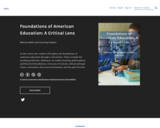
In this survey text, readers will explore the foundations of American education through a critical lens. Topics include the teaching profession, influences on student learning, philosophical and historical foundations, structures of schools, ethical and legal issues, curriculum, classroom environment, and the path forward.
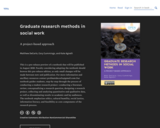
This textbook guides students, step-by-step through the process of conducting a student research project--conducting a literature review, conceptualizing a research question, designing a research project, collecting and analyzing quantitative and qualitative data, as well as disseminating results to academic and lay audiences. The textbook emphasizes ethics, cultural humility, social justice, information literacy, and feasibility as core components of the research process.
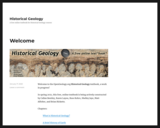
Historical Geology is a free online textbook for Historical Geology courses. It includes the following chapters, as well as a series of case studies, virtual field experiences, tools of the trade, and virtual sample sets.
Chapters:
What is Historical Geology?
A Brief History of Earth
Earth as a System
Earth Materials – The Rock-Forming Minerals
Earth Materials – Rocks
Plate Tectonics
Geologic time
Evolution Part I: The Theory
Taphonomy: The Science of Death and Decay
Innovations of Life Through Time: Life Finds a Way
Stratigraphy – The Pages of Earth’s Past
Using sedimentary structures to interpret ancient environments
Facies
Paleoclimatology
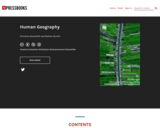
Word Count: 21682
(Note: This resource's metadata has been created automatically by reformatting and/or combining the information that the author initially provided as part of a bulk import process.)